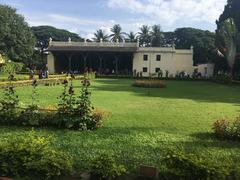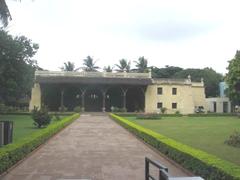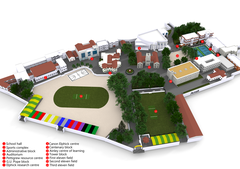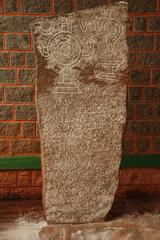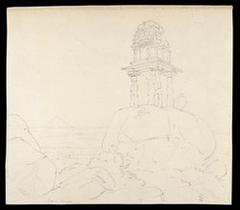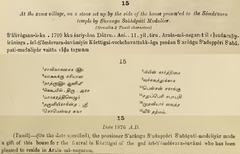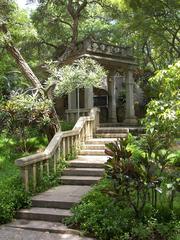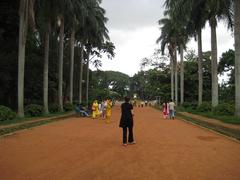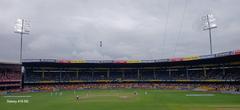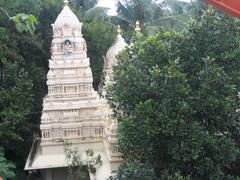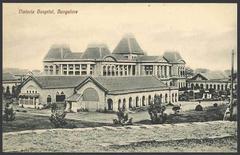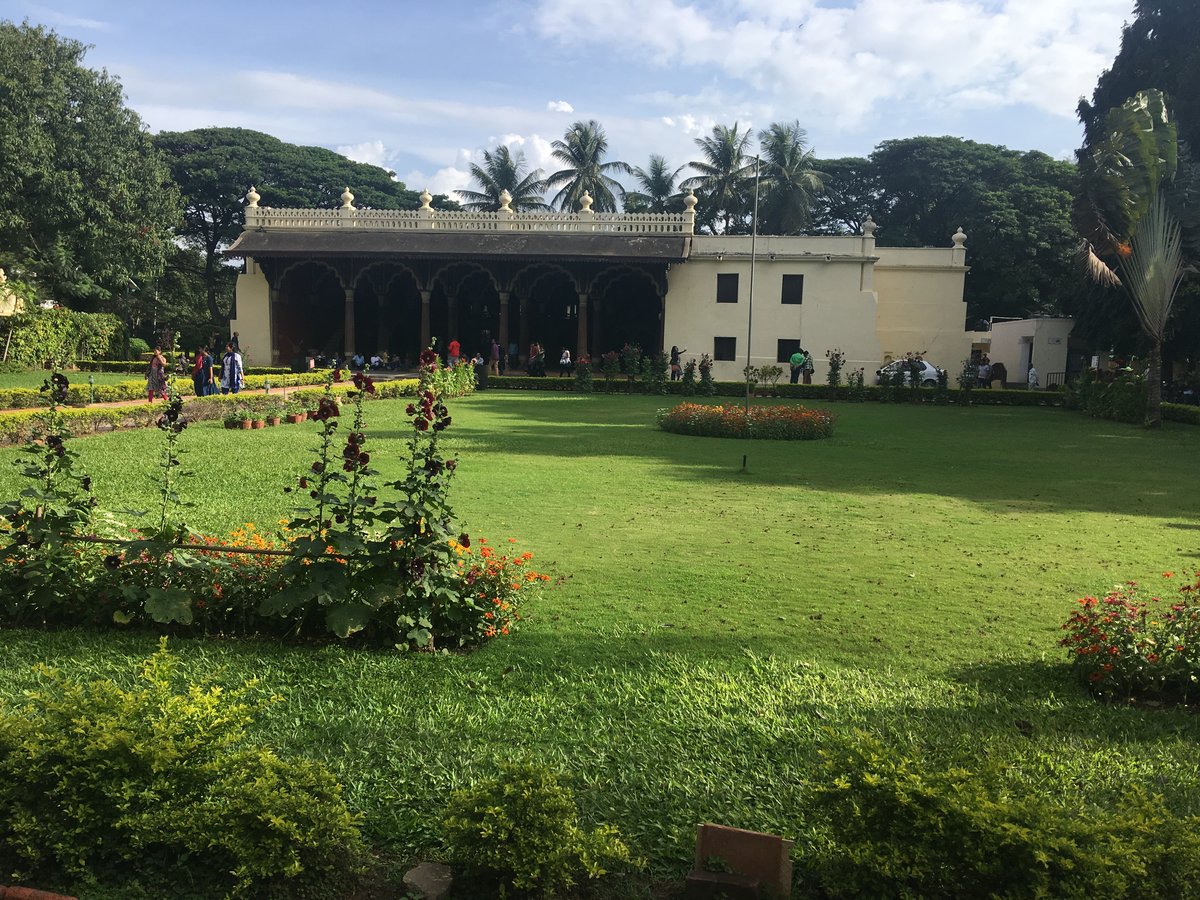
Visiting Tippu’s Summer Palace: Hours, Tickets, and History in Bengaluru
Date: 17/07/2024
Why Visit Tippu’s Summer Palace?
Tipu Sultan’s Summer Palace, nestled in the heart of Bengaluru, is a testament to the rich cultural heritage and architectural brilliance of the 18th century. Often referred to as the ‘Rash-e-Jannat’ or ‘Abode of Happiness,’ this wooden marvel offers a unique glimpse into the past, showcasing the artistry and craftsmanship of the Indo-Islamic architectural style (source). Built by Tipu Sultan, the ‘Tiger of Mysore,’ this palace stands as a symbol of his legacy and resistance against British colonialism. The palace’s intricate design, with its ornate balconies, arches, and floral motifs, reflects a harmonious blend of Islamic and colonial influences, making it an essential visit for history enthusiasts and architecture lovers alike (source).
Table of Contents
- Introduction
- History and Significance of Tipu Sultan’s Summer Palace
- Visitor Information
- Travel Tips
- Special Events and Guided Tours
- Artifacts and Museum
- Conclusion
- FAQ
Introduction
Tipu Sultan’s Summer Palace in Bengaluru, India, is a captivating historical monument that showcases the architectural brilliance of the Indo-Islamic style from the late 18th century. This guide will provide you with all the essential information you need to plan your visit, including the best times to go, ticket prices, and tips for a memorable experience. Whether you’re a history enthusiast or a curious traveler, this palace offers something for everyone.
History and Significance of Tipu Sultan’s Summer Palace
A Wooden Marvel Amidst Urban Bustle
Nestled within the bustling city of Bengaluru, Tipu Sultan’s Summer Palace stands as a testament to the architectural prowess and historical significance of a bygone era. This majestic palace, often referred to as the ‘Rash-e-Jannat’ meaning ‘Abode of Happiness,’ is a magnificent example of Indo-Islamic architecture, showcasing a beautiful blend of colonial influences and traditional Indian craftsmanship.
A Legacy Etched in Teakwood
The history of the Summer Palace dates back to the 18th century, during the reign of Hyder Ali, the ruler of the Mysore Kingdom. Historical accounts suggest that the original structure was built by Hyder Ali using mud. However, it was his son, the legendary Tipu Sultan, who transformed this humble abode into a grand summer retreat. Tipu Sultan commissioned the completion of the palace in 1791, using the finest teakwood sourced from the forests of Mysore. The palace served as his summer residence, a place where he sought respite from the heat and conducted court affairs.
A Fusion of Architectural Styles
The Summer Palace is a two-storied structure, entirely crafted from wood, with pillars, arches, balconies, and intricate floral motifs adorning its exterior. The architectural style of the palace reflects a harmonious fusion of Indo-Islamic and British influences. The ornate balconies, carved brackets, and latticework are reminiscent of traditional Indian architecture, while the symmetrical design and use of columns showcase a distinct colonial influence.
A Witness to History’s Unfolding
The Summer Palace has witnessed significant historical events. It served as the center of Tipu Sultan’s administration during the summer months. After Tipu Sultan’s demise in the Fourth Anglo-Mysore War in 1799, the palace fell into the hands of the British East India Company. The British utilized the palace for various purposes, including housing the secretariat of the British Resident. Recognizing the historical and architectural significance of the Summer Palace, the British government handed it over to the administration of the Mysore State in 1884.
Visitor Information
Visiting Hours and Tickets
Tipu Sultan’s Summer Palace is open to visitors from 10:00 AM to 6:00 PM every day. The entry fee for Indian citizens is INR 15, while foreign tourists are charged INR 200. Children below the age of 15 can enter for free. It is advisable to visit during weekdays to avoid the weekend rush.
Best Times to Visit
The best time to visit the Summer Palace is during the cooler months from October to March. During these months, the weather in Bengaluru is pleasant, making it ideal for exploring the palace and its surroundings.
Accessibility
The palace is located in the heart of Bengaluru and is easily accessible by public transport. The nearest metro station is ‘Krishna Rajendra Market,’ which is a short walk from the palace. For those driving, there is limited parking space available near the palace.
Travel Tips
How to Get There
The palace is well-connected by road and public transport. Visitors can take a bus, taxi, or auto-rickshaw from various parts of the city. The nearest metro station, ‘Krishna Rajendra Market,’ is just a few minutes’ walk from the palace.
Nearby Attractions
While visiting Tipu Sultan’s Summer Palace, you can also explore other nearby attractions such as the Bangalore Fort, KR Market, and Lalbagh Botanical Garden. These sites offer a deeper insight into Bengaluru’s rich history and vibrant culture.
Recommended Itineraries
For a comprehensive experience, consider spending half a day at the Summer Palace and then visiting the nearby Bangalore Fort and KR Market. You can end your day with a relaxing stroll in the Lalbagh Botanical Garden.
Special Events and Guided Tours
Special Events
The palace grounds host various cultural events and exhibitions throughout the year. The annual flower show held in the palace gardens is a major attraction, drawing visitors from across the city and beyond.
Guided Tours
Guided tours are available for visitors who wish to learn more about the palace’s history and architecture. These tours are conducted by knowledgeable guides who provide fascinating insights into the life and times of Tipu Sultan.
Photographic Spots
The palace offers numerous picturesque spots for photography enthusiasts. The intricately carved wooden pillars, arches, and floral motifs provide a stunning backdrop for capturing beautiful memories.
Artifacts and Museum
A Treasure Trove of Artifacts and History
Today, Tipu Sultan’s Summer Palace stands as a protected monument under the Archaeological Survey of India (ASI). It houses a museum that showcases a fascinating collection of artifacts from Tipu Sultan’s reign. Visitors can marvel at the intricate weaponry, coins, paintings, and manuscripts that offer a glimpse into the life and times of the ‘Tiger of Mysore.‘
Conclusion
Tipu Sultan’s Summer Palace is not just a historical relic; it is a symbol of India’s rich cultural heritage and architectural brilliance. It stands as a reminder of Tipu Sultan’s legacy, a ruler who fought valiantly against British colonialism. The palace continues to inspire awe and wonder in visitors, transporting them back to a bygone era of grandeur and splendor. The palace grounds also serve as a venue for cultural events and exhibitions, further enhancing its significance in contemporary Bengaluru. Tipu Sultan’s Summer Palace is a must-visit destination for anyone traveling to Bengaluru. It offers a unique opportunity to delve into the history of South India, appreciate the architectural brilliance of a bygone era, and gain insights into the life and legacy of one of India’s most iconic rulers.
FAQ
What are the visiting hours for Tipu Sultan’s Summer Palace?
- The palace is open from 10:00 AM to 6:00 PM every day.
How much are the tickets for Tipu Sultan’s Summer Palace?
- The entry fee is INR 15 for Indian citizens and INR 200 for foreign tourists. Children below the age of 15 can enter for free.
What is the best time to visit Tipu Sultan’s Summer Palace?
- The best time to visit is from October to March when the weather is pleasant.
How can I get to Tipu Sultan’s Summer Palace?
- The palace is easily accessible by public transport, with the nearest metro station being ‘Krishna Rajendra Market.‘
Summary and Final Thoughts
In conclusion, Tipu Sultan’s Summer Palace is more than just a historical monument; it is a living testament to India’s rich cultural and architectural heritage. The palace, with its intricate wooden carvings and beautifully painted interiors, stands as a symbol of Tipu Sultan’s legacy and his fight against British colonialism (source). Visiting this palace offers a unique opportunity to delve into the history of South India and appreciate the architectural brilliance of a bygone era. The palace grounds, now a protected monument under the Archaeological Survey of India, continue to inspire awe and wonder in visitors, providing a serene escape from the bustling city of Bengaluru (source). Whether you are a history buff, a curious traveler, or someone looking to explore the cultural treasures of Bengaluru, Tipu Sultan’s Summer Palace is a must-visit destination. Don’t forget to download the Audiala mobile app for the latest updates on events and exhibitions at the palace. Happy exploring!
